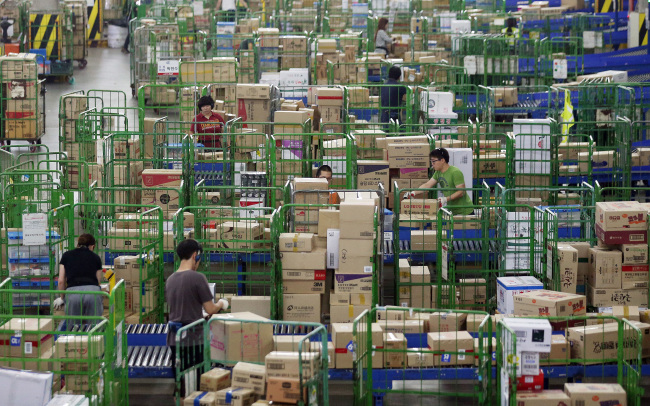[Weekender] Korea on the go
Nation's delivery culture keeps evolving
By 이지윤Published : Sept. 18, 2015 - 17:52
Diverse factors are considered when people choose a home. Not just house prices but also schools, hospitals and big supermarkets near the neighborhood. And then, there is another crucial factor in Korea -- a McDonald’s outlet.

The U.S. hamburger chain started a home delivery service here in 2007 -- when McDelivery was still in its infancy worldwide. Currently, some 320 out of its almost 400 chain stores nationwide offer the service.
As the number of single-person households continues to soar, many young people prefer to use McDelivery rather than eating alone at a restaurant and they are willing to pay a premium to live within the radius of the service.
Other franchise chains such as Burger King, Lotteria and KFC are also following suit now.
Everything can be delivered in this short-tempered, fast-moving and tightly networked country.
The nation’s delivery market surged to 12 trillion won ($10.3 billion) last year, fueled by the growing food industry and mobile order apps.
Sales through food delivery apps have also reached an annual 1 trillion won. Some 50 apps have been launched, with the top three -- Baedal Minjok, Yogiyo and Baedaltong -- dominating almost 90 percent of the market.
The “quick service” using motorcycles is key to this soaring trend.
Most big logistics companies use vans to deliver parcels. Especially big names like FedEx and DHL do not allow their couriers to ride motorcycles due to safety reasons.
But their vans cannot compete with motorcycles when it comes to speed and mobility, which has created a unique market for “bullet delivery” service.
In the past, the service was used by companies who need to send small parcels such as documents to clients. But these days there is almost no limit on users and items delivered.
Young mothers send their breast milk from office to their infant babies at home, while people use couriers for old traditions such as giving money in envelops to newly-wed couples at the wedding hall.
Another niche market is an errand service for women only. Preferred by ladies who live alone, the service delivers everything from grocery to sanitary pads round-the-clock.
Now major retailers are joining the speed race even with their vans, pouring investment into their logistics networks and delivery staff. Most of them offer same-day deliver services, while some items are delivered within hours.
Drones are also expected to play a key role in the future delivery market even though related talks are still in their infancy. CJ Express, the nation’s largest logistics company, plans to start a pilot service for people in isolated areas.
“Big companies are eyeing the lucrative market. Considering the nation’s high population density, the growth potential is huge,” said a mobile delivery app developer who recently secured funding from foreign investors.
“But excessive competition for speed has given rise to safety concerns among riders,” he said, urging for preventive measures.
By Lee Ji-yoon (jylee@heraldcorp.com)


![[Exclusive] Korean military set to ban iPhones over 'security' concerns](http://res.heraldm.com/phpwas/restmb_idxmake.php?idx=644&simg=/content/image/2024/04/23/20240423050599_0.jpg&u=20240423183955)




![[Pressure points] Leggings in public: Fashion statement or social faux pas?](http://res.heraldm.com/phpwas/restmb_idxmake.php?idx=644&simg=/content/image/2024/04/23/20240423050669_0.jpg&u=)

![[Herald Interview] 'Amid aging population, Korea to invite more young professionals from overseas'](http://res.heraldm.com/phpwas/restmb_idxmake.php?idx=644&simg=/content/image/2024/04/24/20240424050844_0.jpg&u=20240424200058)








